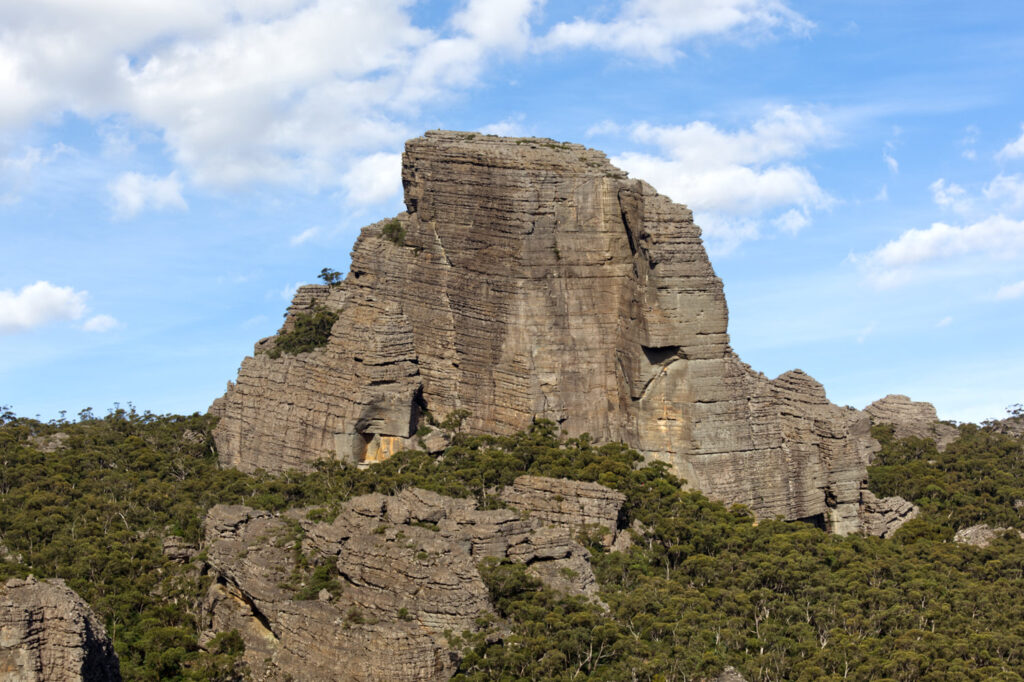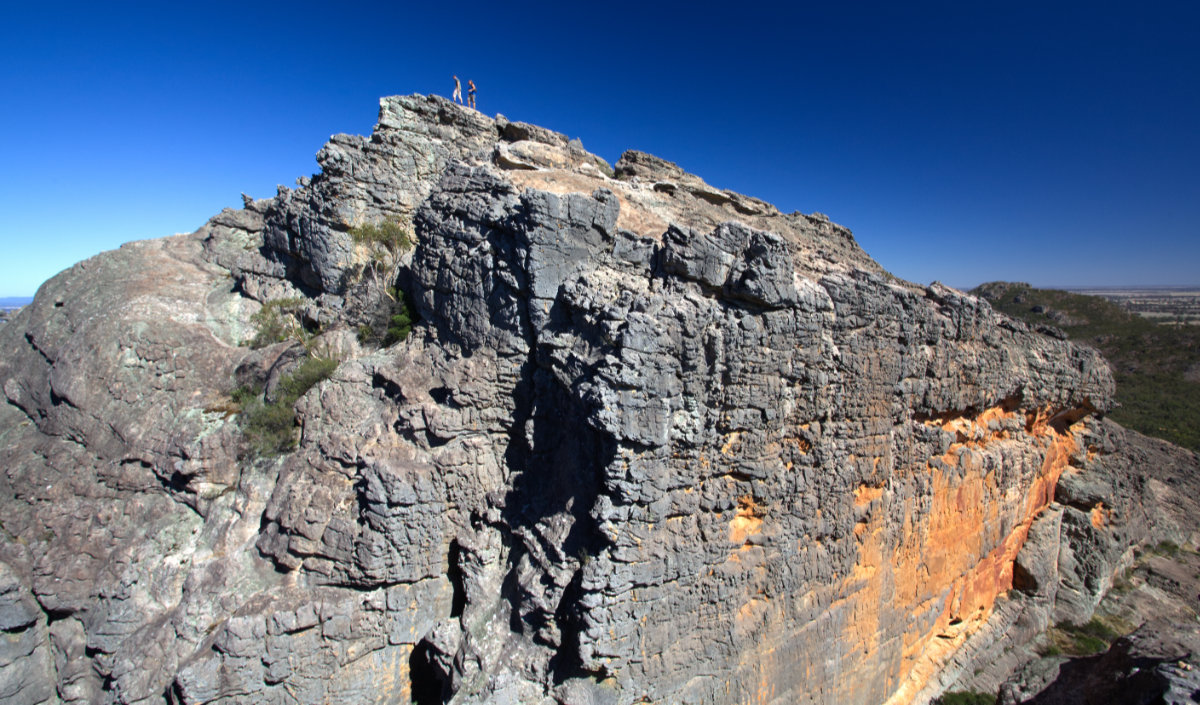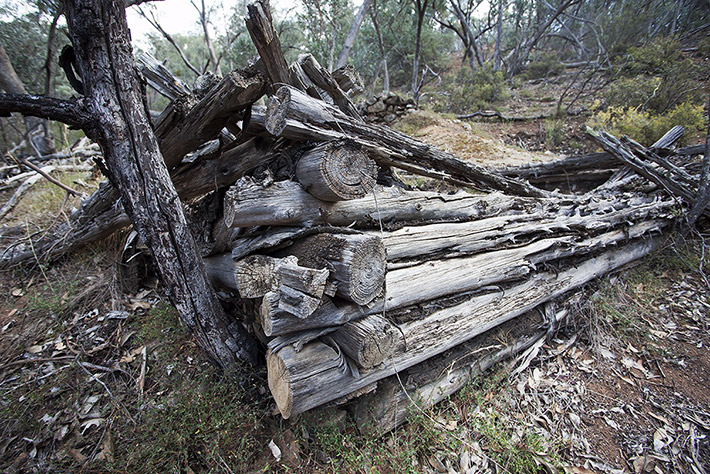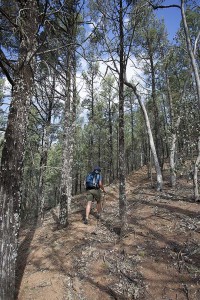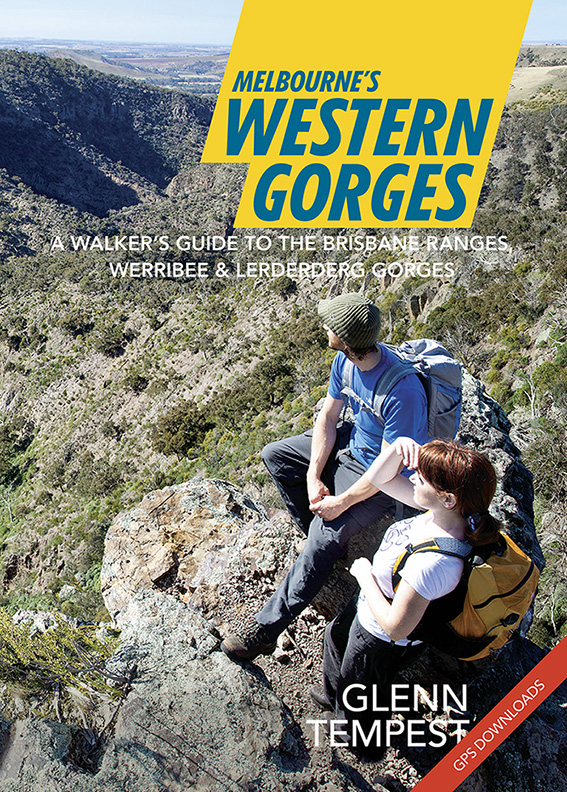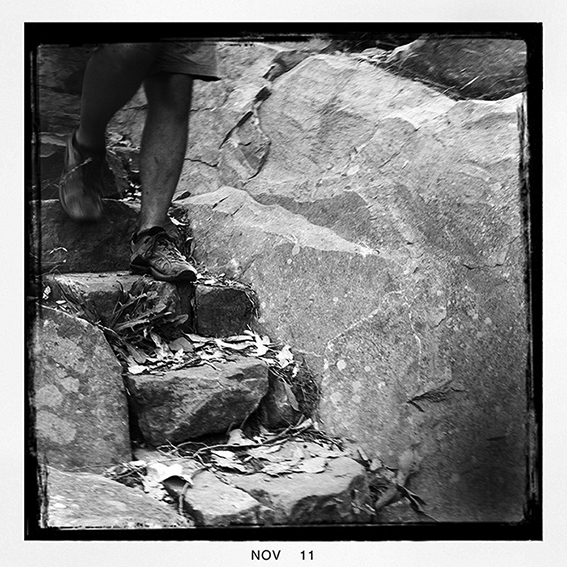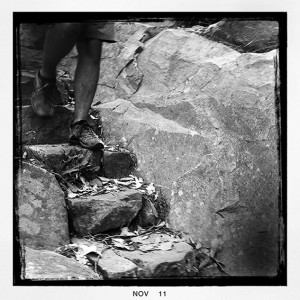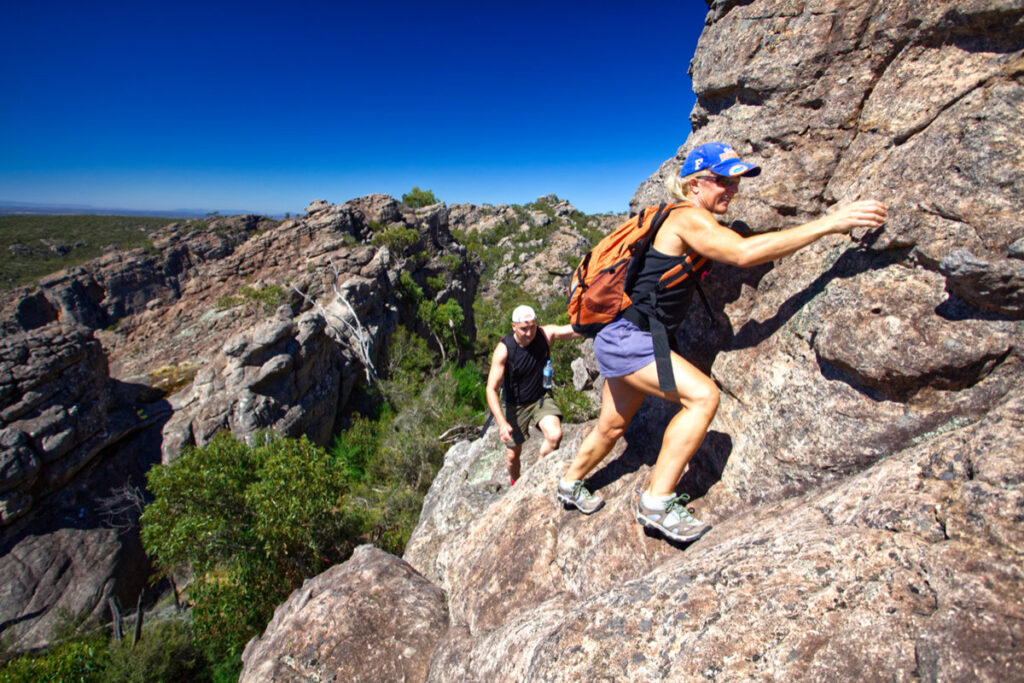
Just before last Christmas Parks Victoria finally released the Greater Gariwerd Landscape Management Plan. Unfortunately in Parks Victoria’s haste to ban rock climbing across significant areas of the park they also appear to have banned scrambling and in doing so they have effectively closed three of the best adventure walks / scrambles in Victoria. Two of these walks are described in our popular walking guide Daywalks Around Victoria (the Stapylton Amphitheatre walk [Hollow Mountain to Mt Stapylton] and the Fortress summit walk).
Here at Open Spaces we had concerned readers contacting us and asking for clarification. It’s no secret that Parks Victoria have closed a significant number of walking trails in the Grampians (possibly to funnel walkers onto their newly constructed Grampians Peaks Trail and to simplify management responsibilities and costs), but to have banned visitors to the Grampians National Park from undertaking any scrambling – an innocuous and common pastime for many outdoor enthusiasts – seemed to be too draconian even for them. Furthermore, there had been no hint of initiating such measures within the Greater Gariwerd Landscape Draft Management Plan nor in the public consultation process that preceded it. Back in 2019 and again in early 2021 Parks Victoria had even given us assurances that such adventure walking trails were open (although not officially recognised). Even as recent as March 2021 Jason Borg (Regional Director, Western Region) had continued to express support for these walks and even the use of safety ropes, safety harnesses and safety helmets both inside or outside of what Parks Victoria call Special Protection Areas (SPAs). To clarify, although the majority of averagely fit and able bushwalkers find these scrambling routes (such as the ridge-line linking Hollow Mountain to Mt Stapylton) to be both enjoyable, easy and straightforward, some walkers (especially those less agile within clubs or school groups) use safety ropes to provide a bit more security.
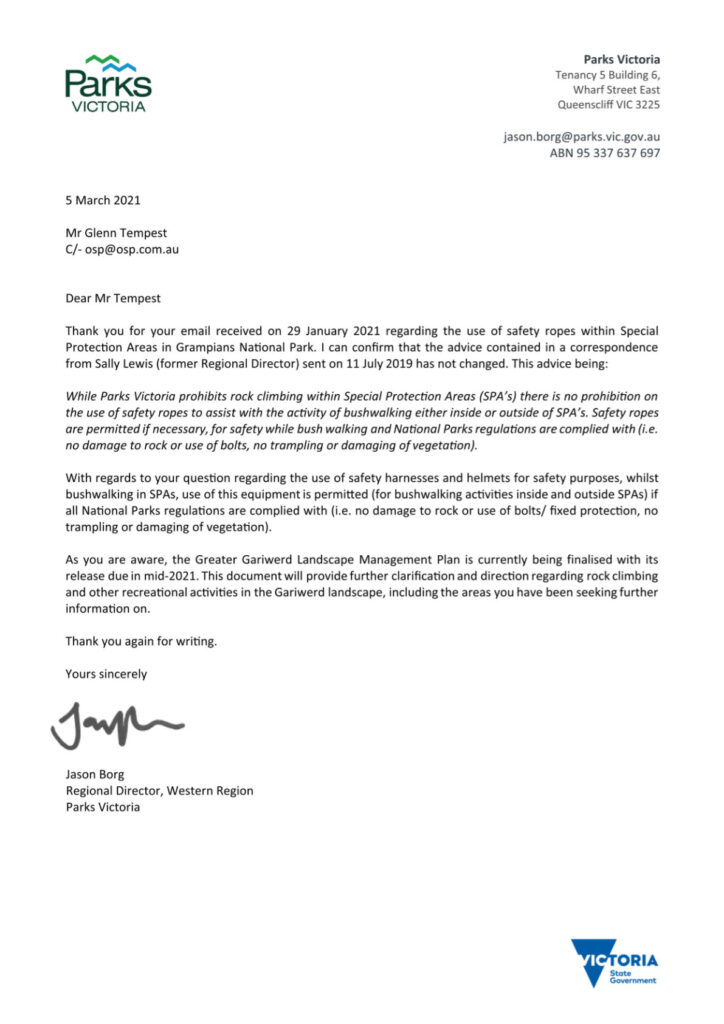
You can read our full blog relating to this matter and Parks Victoria’s detailed responses at Grampians National Park: Safety Ropes, Bushwalking and Special Protection Areas.
With the the release of the Greater Gariwerd Landscape Management Plan Parks Victoria included the following table (p99) which was added without any consultation with either the bushwalking or rock climbing communities.

It is difficult to know why Parks Victoria decided to hastily adapt the North American Yosemite Decimal System (YDS), which is what Parks Victoria refers to as the Sierra Club’s “modern classification”, to divide hiking and rock climbing into five general classes. According to Wikipedia, “the exact definition of the (YDS) classes is somewhat controversial, and updated versions of these classifications have been proposed”. In fact, the Sierra Club (which is California based) have now reviewed the YDS ratings system and have new “Scrambler” definitions “to distinguish them from the closely related but not identical YDS ratings”. There is also the question of where and exactly how does the North American YDS actually fit in with the widely accepted Australian Walking Track Grading System (of which Parks Victoria has endorsed) or with the long established Australian and New Zealand Ewbank rock climbing grading system.
However the real issue is with how Parks Victoria have used the Class 3 definition, which equates to “scrambling with increased exposure, where handholds are necessary and falls could be easily be fatal”. Parks Victoria has decided that class 3 scrambling is to be regarded as “hiking” but only if it occurs on a designated hiking trail. And this is where things get really strange. According to Parks Victoria if class 3 scrambling occurs on a non-designated hiking trail (such as on the Hollow Mountain to Mt Stapylton traverse or to reach the summit of the Fortress) then it is to be considered rock climbing ‘whether ropes or other safety equipment is used or not’. What this effectively means is that although this stops all those pesky rockclimbers in their tracks it also puts an an end to what many experienced walkers take for granted as part of their normal outdoor experience – scrambling. There must be literally thousands of established walking routes around Australia and throughout the world that involve sections of so-called class 3 scrambling. Surely Parks Victoria cannot be serious in banning something so innocuous as scrambling. So, we decided to clarify the situation by contacting Parks Victoria. Almost a month later we finally received the following reply:

To say we were confused is an understatement. The first paragraph states that “class 3 off-designated track scrambling is not permitted outside of designated climbing areas”, and the third paragraph states that “in respect to the Fortress and the Stapylton Amphitheatre walk as described in your correspondence, off track hiking is permitted”. As both the Fortress summit and the Stapylton Amphitheatre walks are indisputably classed by their own adapted YDS system as class 3 this means that these paragraphs are contradictory.
The rest of the letter told us that unlike 12 months previously, safety equipment can no longer be used by bushwalkers unless they are on a Parks Victoria designated walking trail. Again, very odd. Also, the walking and scrambling route to the top of the Chimney Pots is no longer allowed as it is now located in a Special Protection Area, yet this is again strange as there is a designated walking trail loop around the entire Chimney Pots, up against the cliffs. Apparently you can apply to walk and scramble to the top of the Chimney Pots but only after applicants “document this request in writing including details of when, who and why they need to walk in this area”. If it sounds like a ban and looks like a ban then it’s probably a ban!
This letter from Jason Borg left us more confused than ever. I therefore emailed Jason again to point out the contradictions and soon received an email back, not from Jason Borg but from Will Cox, the acting Area Chief Ranger for the Grampians National Park. Will Cox and I exchanged a couple of confusing emails in which he finally stated that “Parks Victoria will be conducting a review of these hiking tracks along with many other tracks throughout the park through its implementation of the Greater Gariwerd Landscape Management Plan. As you can appreciate, I can’t pre-empt any outcomes of this process”. I summarised the conversation with, “So if I understand you correctly walkers can walk these trails until further notice?”. Will Cox didn’t reply so I took this to be a reasonable assumption of the situation as it stands.
So there you have it. The Greater Gariwerd Landscape Management Plan has been released and scrambling may or may not be banned in the Grampians National Park. From what I can ascertain, this plan, even though it has been released, is exactly that, still a plan. Apparently Parks Victoria has communicated in writing that a set-aside will be posted on its website. However, if the plan is enacted as is, without changes, then class 3 scrambling will be banned and bushwalkers could be facing large fines for doing what many walkers around Australia and the world take for granted.
To be fair Parks Victoria appear to have painted themselves into a complicated bureaucratic corner over their hasty attempts to initiate sweeping rock climbing bans across the Grampians and in doing so have unfortunately caught up bushwalkers in the process. If our email conversations with Parks Victoria are anything to go by then it is obvious they are struggling with a complicated, poorly thought out and ultimately contradictory strategy.
KEY POINTS
- Parks Victoria are in the process of banning class 3 scrambling in the Grampians National Park.
- Bushwalkers are potentially facing large fines should they be caught class 3 scrambling on non-designated hiking trails.
- According to Parks Victoria their class 3 definition is that ascending a given section of rock (whether it is 5m in length or 100m in length), whether with or without “ropes and other safety equipment” is “scrambling” if that section of rock is on a “designated hiking trail”; however, ascending that identical section of rock (whether with or without ropes and other safety equipment) is regarded as “rockclimbing” if it is not on a designated hiking trail. In other words, simply by designating a trail or by removing its designation, an ascent (whether with or without ropes and safety equipment) can be assessed as either class 3 scrambling or rockclimbing according to Parks Victoria’s whim.
If you wish to have an input regarding the future of walking and scrambling trails in the Grampians National Park, please consider writing to Parks Victoria. It would also help if you encouraged your bushwalking club to do likewise. If enough people voice their opinions then maybe Parks Victoria will be forced into revisiting this issue and come up with a less draconian solution, a solution that will benefit both Parks Victoria and bushwalkers alike. The following contacts include Bushwalking Victoria (who represent all bushwalkers in the state) and relevant Parks Victoria representatives:
Bushwalking Victoria: admin@bushwalkingvictoria.org.au
Lily D’Ambrosio (Minister for Energy, Environment and Climate Change): lily.dambrosio@parliament.vic.gov.au
Matthew Jackson (Chief Executive Officer of Parks Victoria): ceo@parks.vic.gov.au
Jason Borg (Parks Victoria Regional Director, Western Region): Jason.Borg@parks.vic.gov.au
Will Cox (Acting Area Chief Ranger, Grampians National Park, Parks Victoria): will.cox@parks.vic.gov.au
Stuart Hughes (Director of Park Planning and Policy, Parks Victoria): stuart.hughes@parks.vic.gov.au
In the meantime I’d recommend that bushwalkers consult with Parks Victoria before undertaking any of the walks discussed here. Parks Victoria can be contacted on 13 1963 or via email at info@parks.vic.gov.au.
I’d like to also thank Parks Victoria for addressing our concerns.
